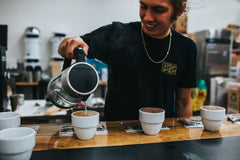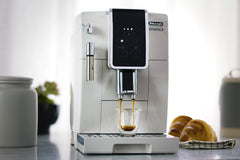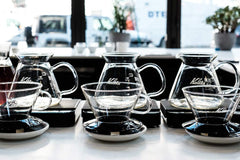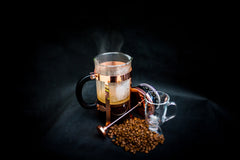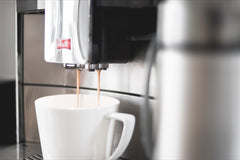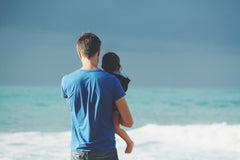
Ah, coffee. If you’re like most Americans, you’re sipping from a travel mug on your way to work or stopping by the local Starbucks to refuel several times a day.
Not only is savoring a steaming cup of coffee soothing, but the caffeine will perk you right up!
A National Coffee Association study from 2018 found that 64% of Americans have a cup of joe daily. This is the highest percentage since 2012.
But.
Can you have too much of a good thing?
At Nomad Coffee Club, we want to ensure you know the caffeine content in each type of coffee to make an informed decision about your intake. So, here is everything you need to know about the amount of caffeine that should be in your brew.
What Factors Affect Caffeine Content?
Did you know? The flavor profile in a java cup depends on the type of coffee bean and its origin.
Researcher Dr. Arnot discovered another little known caffeine fact.
The level of caffeine is also affected by the altitude at which the plant is grown.
Why?
The higher the altitude, the fewer insects. Fewer insects lead to less caffeine.
In the meantime, lower altitudes have more insects, resulting in more concentrated caffeine.
The caffeine content also depends on more familiar factors, such as:
- Roast — Lighter roasts have higher caffeine content, while darker roasts have a richer flavor.
- Grind
- Brewing method
- Type of coffee beans
- Type of coffee — Caffeine content greatly varies between instant coffee, regularly brewed, decaf, espresso, and so on.
- Serving size — Ranges from 30 to 700 ml (1 to 24 oz) for one cup of coffee.
How Much Caffeine Is in a Cup of Coffee?
This is interesting because Dietary Guidelines for Americans places the average US adult caffeine intake between 110 and 250 milligrams (mg) daily.
Of course, this varies from drink to drink. For your cup of joe, we recommend you stick to the average caffeine amount: 161 mg.
To that end, here is a detailed list of caffeine content based on different coffee drinks.
Brewed Coffee
Brewed, filter, or regular coffee is the most commonly made coffee in Europe and the US.
Ground beans are brewed in hot water and left to sit in a plastic, paper, or metal filter. The filter separates the grounds from the brewed coffee.
You can also use a French press or a percolator to make brewed coffee without a filter.
One 8-oz serving size of brewed coffee can have between 70 and 140 mg of caffeine. The average is 95 mg.
Note: lighter roasts will have more caffeine than darker roasts. This is because lighter roasts are denser since the beans weren’t roasted for a long time at a high temperature.
The rule is: the longer coffee beans are roasted, the more caffeine content is lost.
For your cup of joe, we recommend you stick to the average caffeine amount: 95 mg.
Espresso
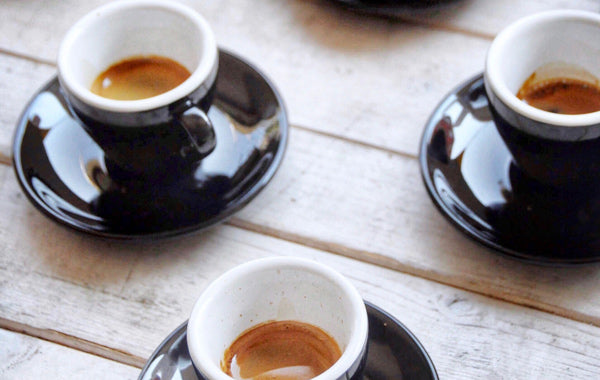
Her majesty the espresso. Small but mighty.
Espresso is made by forcing hot water or steam through finely-ground coffee beans. To make it, you’ll need an espresso machine or a stovetop pot.
Espresso is measured differently than coffee: in 1 oz shots instead of cups. It’s a little drink because the caffeine concentration is so high.
Caffeine levels in espresso depend on the preparation method:
- Single-shot — 29 to 100 mg (most commonly 75 mg)
- Double-shot — 58 to 185 mg (most commonly 150 mg)
- Decaf single-shot — around 8 mg
- Decaf double-shot — around 16 mg
Researchers say four shots of espresso a day is the optimal number. We recommend trying out different kinds and figuring out what feels best for you.
Instant Coffee

To make instant coffee, you need brewed coffee that was previously frozen or spray dried. Simply add hot water to the instant coffee powder or granules.
It’s easy to make, as there isn’t any brewing required.
Instant coffee has significantly less caffeine than regular coffee.
One cup (8 oz) contains 30 to 90 mg. The average caffeine content in a serving size is 62 mg.
Decaf Coffee

Don’t let the name fool you. Decaf coffee isn’t caffeine-free.
The amounts of caffeine vary, but on average, an 8 oz cup of coffee has between 0 to 7 mg per cup. The average is around 2 mg of caffeine.
The level of caffeine in decaf coffee is dependent on the:
- Decaffeination method
- Type of coffee
- Cup size
Here are some of the most common types of decaf coffee and their corresponding caffeine content:
- Folgers and Nescafe — 0 to 3 mg. If you want to limit your caffeine consumption, this is the best option.
- Brewed decaf — 4 to 7 mg per 8 oz
- Brewed espresso — up to 16 mg per 1 oz shot
- Starbucks — 15 mg per 8 oz cup
Cold Brew

Cold brew is not the same as iced coffee. Iced coffee means brewed coffee served over ice.
But, to make a cold brew, coffee grounds are steeped in water at room temperature for 8 to 24 hours.
The average amount of caffeine in a 12 oz cold brew cup is between 153 to 238 mg.
Turkish Coffee

Turkish coffee can be made from any kind of coffee. The requirements are:
- The coffee beans must be finely ground.
- It can only be brewed in pots called cezve/ibrik. The pot yields a maximum amount of foam.
Here’s a video on how to make Turkish coffee at home:
A Turkish coffee cup is around 2 oz, with 50 mg of caffeine.
French Press

French Press Coffee Brewing Guide
French press coffee is relatively low in caffeine because the grinds are so large. The grinds have to be large or instead of coffee, you’d have a cup full of coffee grounds.
Coffee made with a French press has 80 to 135 mg of caffeine per 8 oz.
Interested in making it yourself? Check out our French press coffee brewing guide, as well as our coffee maker.
Arabica vs. Robusta Coffee Beans Caffeine
Robusta coffee beans are very bitter and are usually used in less expensive instant coffees and espressos, such as Italian espresso.
On the other hand, Arabica coffee beans are higher in acidity. They are also softer and more complex.
A study from 2019 found that Robusta beans have twice the amount of caffeine as Arabica. On average, Robusta contains 2.7% caffeine, whereas Arabica generally has 1.5%
Here is how much caffeine both beans have, depending on species:
| Species and Variety | Caffeine Content |
| Arabica | Per 100 grams of unroasted beans |
| Mundo Nuvo | 1.11 |
| Typico | 1.05 |
| Catuai | 1.34 |
| Laurina | 0.62 |
| Robusta | |
| Robusta | >4 |
| Kouillon | 2.36 |
| Laurenti | 2.45 |
Table: How Much Caffeine in a Cup of Coffee
To make things easy on you, here are the average caffeine values of all the coffee types mentioned above:
| Coffee Drink | In Standard Serving Size | Concentration mg/oz |
| Brewed | 70-140 mg 8 oz | 12-21 |
| Espresso | 47-64 mg 1 oz | 47-64 |
| Instant | 30-90 mg 8 oz | 11.8 |
| Decaf | 0-7 mg 8 oz | 0.75 |
| Cold Brew | 100 mg 8 oz | 12.5 |
| Turkish | 50 mg 2 oz | 25 |
| French Press | 80 -135 mg 8 oz | 13.4 |
Is 200 mg of Caffeine a Lot?
In the words of Hemingway:
“Good. Coffee is good for you. It's the caffeine in it. Caffeine, we are here. Caffeine puts a man on her horse and a woman in his grave.”
For healthy adults, 200 mg of caffeine is fine.
In fact, 400 mg a day is safe for the majority of people.
That approximately comes up to:
- Four cups of brewed coffee
- Two energy drinks
- 10 cans of cola
Other Sources of Caffeine

Coffee is only one of the caffeine sources in your daily life.
There are less obvious sources of caffeine, such as:
- Tea — Normally has less caffeine than a cup of coffee. An 8 oz green tea has about 28 mg, while black tea has about 47 mg of caffeine.
- Soft drinks — A 12 oz cola has 33 mg of caffeine.
- Energy drinks — Have a high amount of caffeine; from 40 to 250 mg per 8 oz.
- Chocolate — Darker chocolate has more caffeine than lighter chocolate, because of its higher cacao content.
For the content of caffeine in popular drinks, go here.
Never Miss Your Coffee Fix With Nomad Coffee Club
Our monthly coffee subscriptions start as low as $19.00. You can choose from 3, 6, or 12 months of subscription plans.
We offer:
- Fresh, specialty coffee
- Different coffee every month
- Beans roasted with love in LA, California
- Free shipping in the US
How was the Nomad Coffee Club founded?
After a visit to Africa, our founder Jon Clark came home to the US with a desire to help — bringing education to children and drinking water to women who were walking 8 miles a day to retrieve water for their families.
Nomad Coffee Club customers participate in helping these communities. For every bag of coffee we sell, we donate a portion to the Nomad school in Kenya.
Yes, we want to sell coffee. But our ultimate goal is to help those who are less fortunate.
You too can be a part of our mission with a single coffee purchase.
Learn more about us here, and learn how to brew a perfect cup of coffee here.

